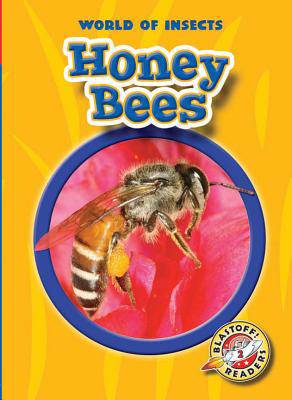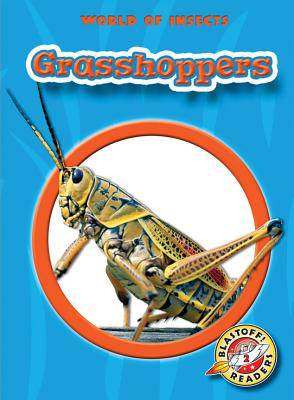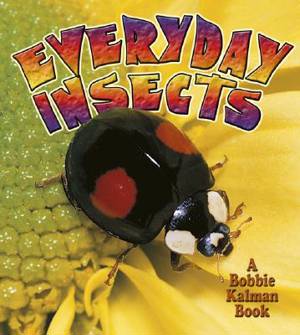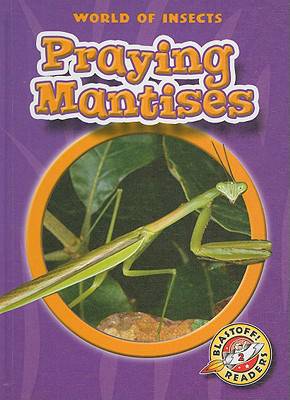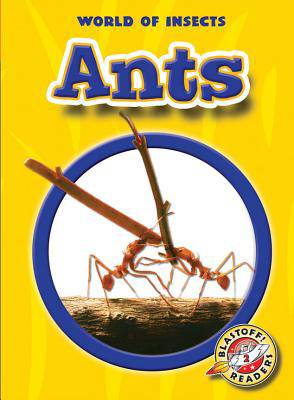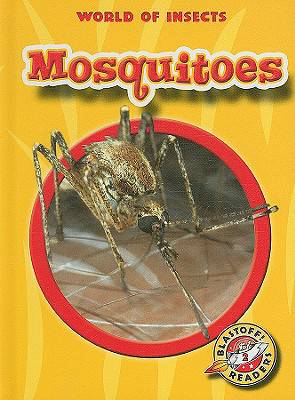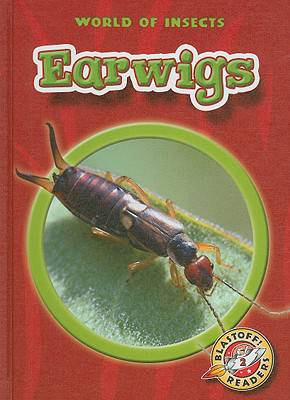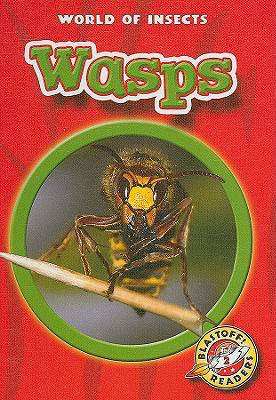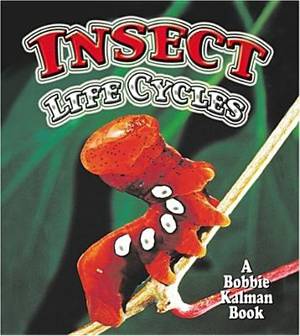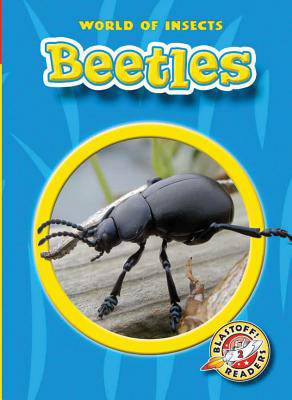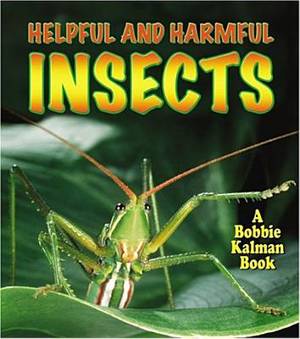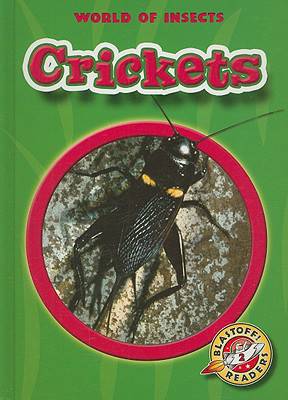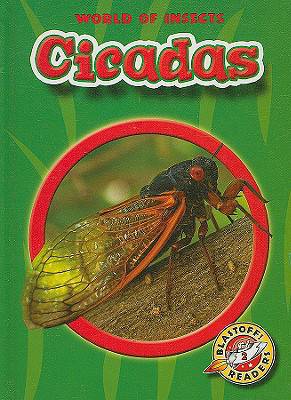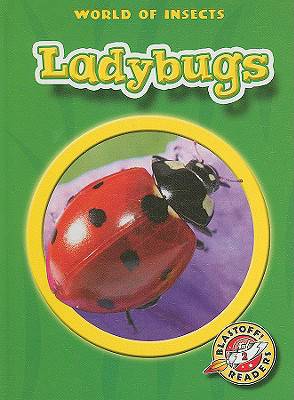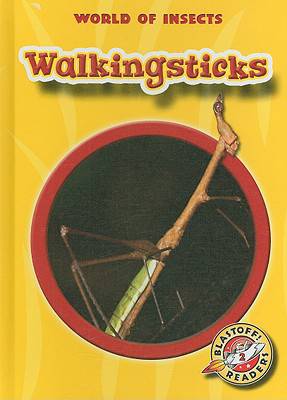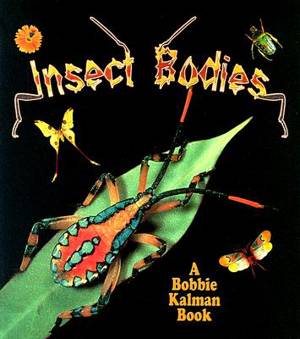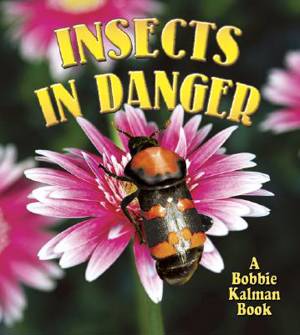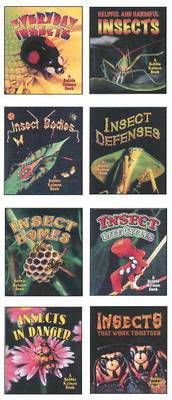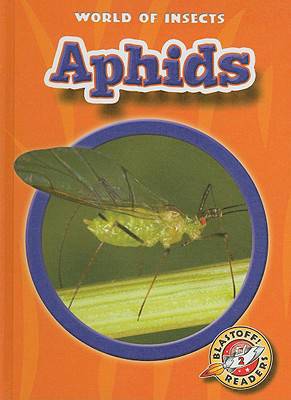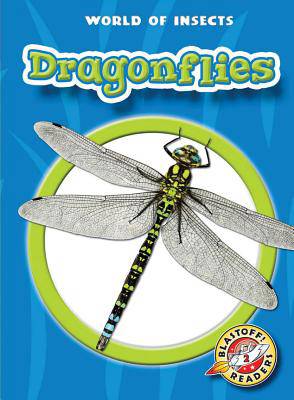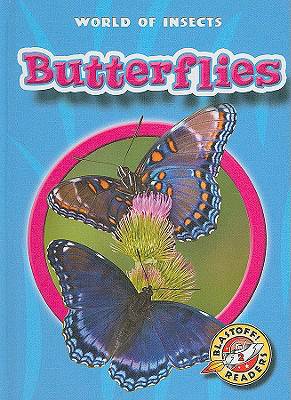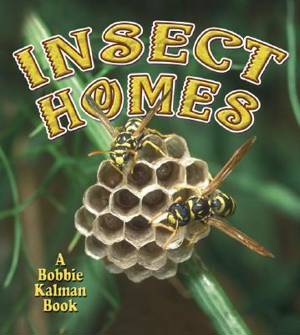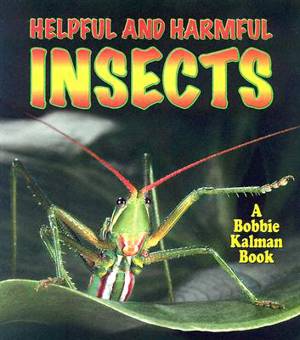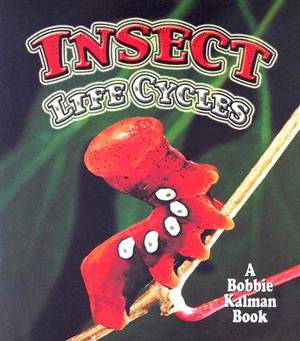
- Retrait gratuit dans votre magasin Club
- 7.000.000 titres dans notre catalogue
- Payer en toute sécurité
- Toujours un magasin près de chez vous
- Retrait gratuit dans votre magasin Club
- 7.000.0000 titres dans notre catalogue
- Payer en toute sécurité
- Toujours un magasin près de chez vous
-
Honey Bees
Colleen Sexton
- Livre relié | Anglais | World of Insects
- Honey bees collect pollen and nectar from hundreds of flowers a day. This helps flowers spread pollen to each other to make new seeds. Discover how be... Savoir plus
46,95 €Livraison 1 à 4 semaines46,95 €Livraison 1 à 4 semaines -
Grasshoppers
Emily K Green
- Livre relié | Anglais | World of Insects
- Grasshoppers use their back legs to jump high into the air! They often travel in swarms that can easily eat an entire field of plants. Hop into this i... Savoir plus
46,95 €Livraison 1 à 4 semaines46,95 €Livraison 1 à 4 semaines -
Everyday Insects
Bobbie Kalman
- Livre broché | Anglais | World of Insects
- Insects are all around us! In Everyday Insects, children will learn about the insects they are likely to see during their day-to-day lives and discove... Savoir plus
13,95 €Livraison 1 à 4 semaines13,95 €Livraison 1 à 4 semaines -
Praying Mantises
Colleen Sexton
- Livre relié | Anglais | World of Insects
- These unique insects get their name from the position in which they hold their front legs together. These legs are also "preying" as they shoot out an... Savoir plus
46,95 €Livraison 1 à 4 semaines46,95 €Livraison 1 à 4 semaines -
Ants
Emily K Green
- Livre relié | Anglais | World of Insects
- Ants live on every landmass on Earth except Antarctica and certain small islands. Living together in colonies, each ant plays a part in keeping the co... Savoir plus
51,95 €Livraison 1 à 4 semaines51,95 €Livraison 1 à 4 semaines -
Mosquitoes
Martha E H Rustad
- Livre relié | Anglais | World of Insects
- Mosquitoes can move their wings 450 to 600 times per second! That is the buzzing sound you hear when a mosquito is nearby. This book explains how mosq... Savoir plus
46,95 €Livraison 1 à 4 semaines46,95 €Livraison 1 à 4 semaines -
Earwigs
Colleen Sexton
- Livre relié | Anglais | World of Insects
- Contrary to their name's suggestion, earwigs do not crawl into people's ears. Earwigs have pinchers on their bodies that they use to fight other earwi... Savoir plus
51,95 €Livraison 1 à 4 semaines51,95 €Livraison 1 à 4 semaines -
Wasps
Martha E H Rustad
- Livre relié | Anglais | World of Insects
- Did you know that wasps chew plants and wood to make a paste that hardens into paper? They use this paste to make the nests in which they live. Eager ... Savoir plus
46,95 €Livraison 1 à 4 semaines46,95 €Livraison 1 à 4 semaines -
Insect Life Cycles
Molly Aloian
- Livre relié | Anglais | World of Insects
- Following insects from egg to adult, Insect Life Cycles outlines the amazing changes different species of insects go through before they become fully-... Savoir plus
46,95 €Livraison 1 à 4 semaines46,95 €Livraison 1 à 4 semaines -
Beetles
Colleen Sexton
- Livre relié | Anglais | World of Insects
- With estimates between 5 and 8 million, beetles have more species than any other insect. Beetles can live in almost all habitats, using their strong j... Savoir plus
46,95 €Livraison 1 à 4 semaines46,95 €Livraison 1 à 4 semaines -
Helpful and Harmful Insects
Molly Aloian
- Livre relié | Anglais | World of Insects
- Although some insects are considered pests, children will be surprised to discover just how important all insects are to the other living things on Ea... Savoir plus
46,95 €Livraison 1 à 4 semaines46,95 €Livraison 1 à 4 semaines -
Crickets
Emily K Green
- Livre relié | Anglais | World of Insects
- Like cicadas, crickets also sing a very recognizable song. They sing their song by rubbing their wings together! Readers will get an introduction to t... Savoir plus
51,95 €Livraison 1 à 4 semaines51,95 €Livraison 1 à 4 semaines -
Cicadas
Colleen Sexton
- Livre relié | Anglais | World of Insects
- Cicadas are one of few insects that are easily recognizable simply by the sound they make. The male's song can be heard in summer, when female cicadas... Savoir plus
46,95 €Livraison 1 à 4 semaines46,95 €Livraison 1 à 4 semaines -
Ladybugs
Martha E H Rustad
- Livre relié | Anglais | World of Insects
- Ladybugs don't have spots all their lives, and some never have spots. Not a plant-eating insect, ladybugs love to eat aphids and are often used to pro... Savoir plus
46,95 €Livraison 1 à 4 semaines46,95 €Livraison 1 à 4 semaines -
Walkingsticks
Emily K Green
- Livre relié | Anglais | World of Insects
- Do you think you could spot a walkingstick on a tree branch? Walkingsticks are able to camouflage themselves so completely with their surroundings tha... Savoir plus
46,95 €Livraison 1 à 4 semaines46,95 €Livraison 1 à 4 semaines -
Insect Bodies
Molly Aloian
- Livre broché | Anglais | World of Insects
- There are more than a million species of insects living on Earth, and all insects have similar bodies. In Insect Bodies, children will learn the major... Savoir plus
13,95 €Livraison 2 à 3 semaines13,95 €Livraison 2 à 3 semaines -
Insects in Danger
Kathryn Smithyman
- Livre relié | Anglais | World of Insects
- Insects are essential to life on Earth and many of them are endangered. Some may become extinct even before we know they exist! Kids will discover tha... Savoir plus
42,45 €Livraison 1 à 4 semaines42,45 €Livraison 1 à 4 semaines -
World of Insects -Lib
- Livre relié | Anglais | World of Insects | n° 8
- Suitable for ages 4 to 8 years, this work provides children with an overview of the important characteristics of insects and their relationships to th... Savoir plus
280,95 €Livraison 1 à 4 semaines280,95 €Livraison 1 à 4 semaines -
Aphids
Colleen Sexton
- Livre relié | Anglais | World of Insects
- These tiny insects are one of the most destructive insects to plant life. Thousands of aphids can live and feed on one plant. Readers will eat this bo... Savoir plus
46,95 €Livraison 1 à 4 semaines46,95 €Livraison 1 à 4 semaines -
Dragonflies
Emily K Green
- Livre relié | Anglais | World of Insects
- Did you know that dragonflies have six legs like other insects, but cannot walk? Dragonflies use their powerful wings to get from place to place. Lear... Savoir plus
51,95 €Livraison 1 à 4 semaines51,95 €Livraison 1 à 4 semaines -
Butterflies
Martha E H Rustad
- Livre relié | Anglais | World of Insects
- Did you know that some adult butterflies change their appearance depending on the season? These unique insects use their colorful wings to attract mat... Savoir plus
46,95 €Livraison 1 à 4 semaines46,95 €Livraison 1 à 4 semaines -
Insect Homes
Bobbie Kalman
- Livre relié | Anglais | World of Insects
- From giant termite mounds to intricate hives, Insect Homes provides children with a fascinating description of the many types of homes that insects bu... Savoir plus
42,45 €Livraison 1 à 4 semaines42,45 €Livraison 1 à 4 semaines -
Helpful and Harmful Insects
Molly Aloian
- Livre broché | Anglais | World of Insects
- Although some insects are considered pests, children will be surprised to discover just how important all insects are to the other living things on Ea... Savoir plus
13,95 €Livraison 2 à 3 semaines13,95 €Livraison 2 à 3 semaines -
Insect Life Cycles
Molly Aloian
- Livre broché | Anglais | World of Insects
- Following insects from egg to adult, Insect Life Cycles outlines the amazing changes different species of insects go through before they become fully-... Savoir plus
13,95 €Livraison 2 à 3 semaines13,95 €Livraison 2 à 3 semaines





